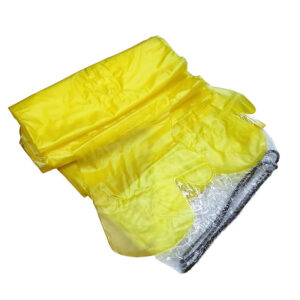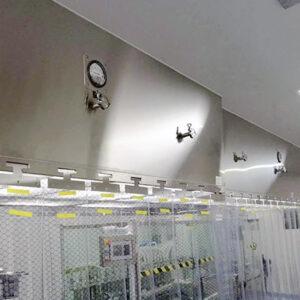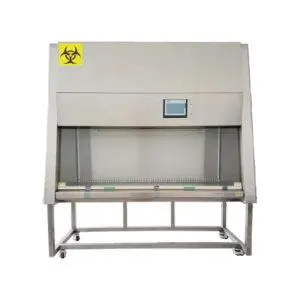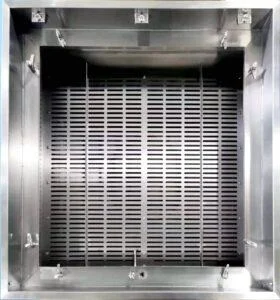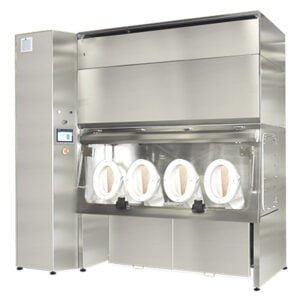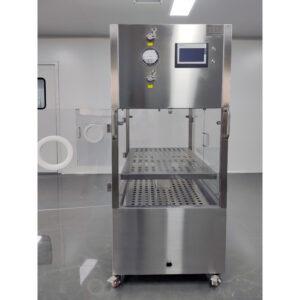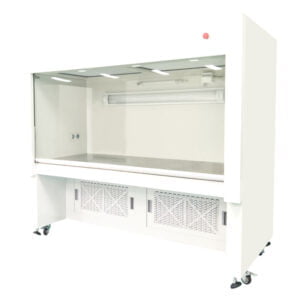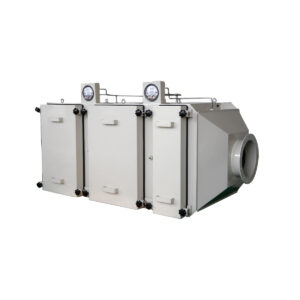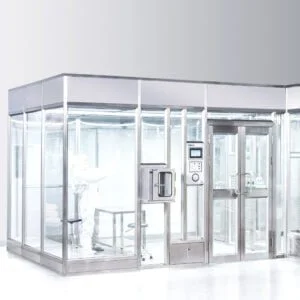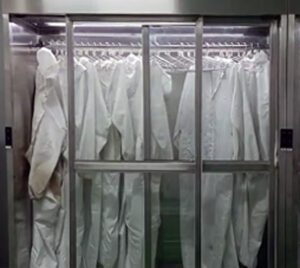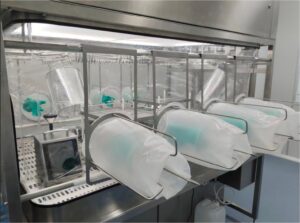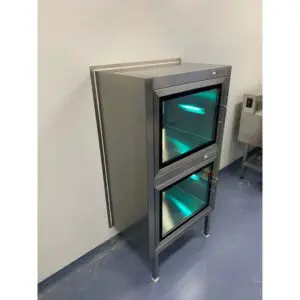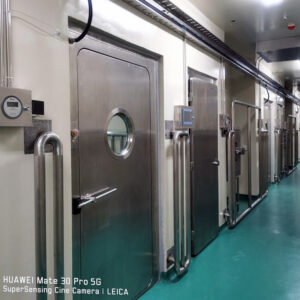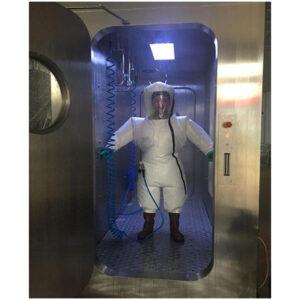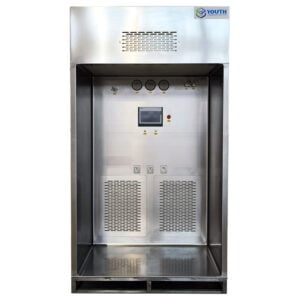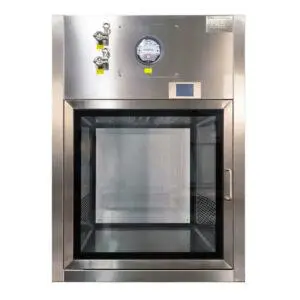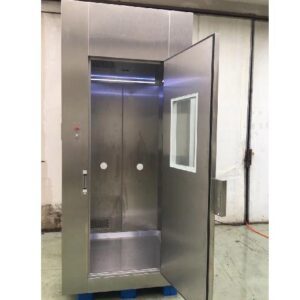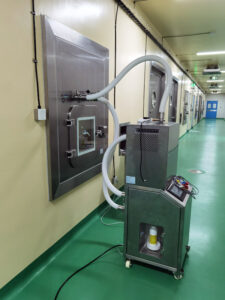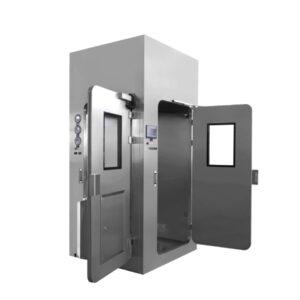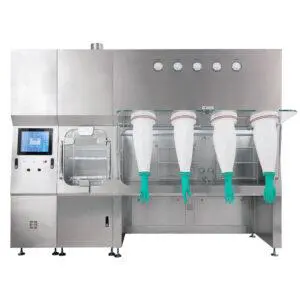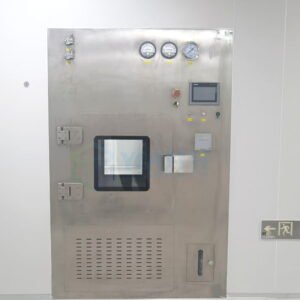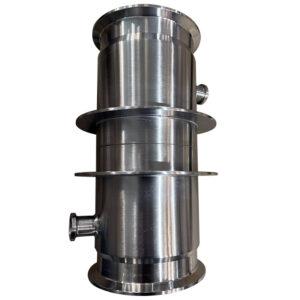Menjelang tahun 2025, permintaan akan lingkungan yang bersih dan terkendali di berbagai industri terus meningkat, sehingga mendorong inovasi dan persaingan di pasar unit aliran udara laminar. Peralatan penting ini memainkan peran penting dalam menjaga kondisi steril untuk proses yang sensitif, mulai dari manufaktur farmasi hingga produksi semikonduktor. Dengan kemajuan teknologi dan meningkatnya kesadaran akan pentingnya kualitas udara, produsen terus mengembangkan penawaran mereka untuk memenuhi kebutuhan pasar yang terus berubah.
Dalam artikel komprehensif ini, kami akan mengeksplorasi biaya yang diantisipasi untuk unit aliran udara laminar pada tahun 2025, membandingkan harga di berbagai model dan produsen. Kami akan mempelajari faktor-faktor yang memengaruhi harga, kemajuan teknologi yang dapat memengaruhi biaya, dan memberikan wawasan untuk membantu Anda membuat keputusan yang tepat saat berinvestasi pada peralatan penting ini. Baik Anda seorang manajer laboratorium, perancang kamar bersih, atau perencana fasilitas, memahami proyeksi biaya dan tren dalam teknologi aliran udara laminar akan sangat penting untuk tujuan penganggaran dan perencanaan.
Saat kami beralih ke analisis mendalam, penting untuk dicatat bahwa meskipun memprediksi harga yang tepat untuk tahun 2025 bisa jadi menantang, kami dapat mengidentifikasi tren dan faktor yang kemungkinan besar akan membentuk pasar. Dengan memeriksa model penetapan harga saat ini, kemajuan teknologi, dan prakiraan industri, kami dapat memberikan wawasan berharga tentang apa yang akan terjadi di tahun-tahun mendatang.
Berdasarkan tren pasar saat ini dan prediksi para ahli, harga unit aliran udara laminar pada tahun 2025 diperkirakan akan berkisar antara $5.000 hingga $50.000, tergantung pada ukuran, fitur, dan spesifikasi kinerja.
Faktor-faktor apa saja yang akan memengaruhi harga satuan aliran udara laminar pada tahun 2025?
Biaya unit aliran udara laminar pada tahun 2025 akan dipengaruhi oleh berbagai faktor, mulai dari kemajuan teknologi hingga permintaan pasar dan biaya bahan baku. Memahami faktor-faktor ini sangat penting bagi produsen dan konsumen di industri ini.
Faktor-faktor utama yang diperkirakan akan berdampak pada harga termasuk peningkatan efisiensi energi, integrasi teknologi pintar, dan kemajuan dalam sistem penyaringan. Selain itu, kondisi ekonomi global dan dinamika rantai pasokan akan berperan dalam menentukan biaya akhir bagi konsumen.
Ketika kita melihat ke arah tahun 2025, salah satu faktor paling signifikan yang memengaruhi harga adalah penggabungan kemampuan Internet of Things (IoT) ke dalam unit aliran udara laminar. Teknologi ini memungkinkan pemantauan jarak jauh, pemeliharaan prediktif, dan penyesuaian waktu nyata, yang berpotensi mengimbangi biaya awal melalui peningkatan masa pakai yang lebih lama dan pengurangan waktu henti.
Pakar industri memperkirakan bahwa unit aliran udara laminar berkemampuan IoT dapat meminta premi harga 15-20% pada tahun 2025, tetapi dapat menawarkan penghematan biaya operasional hingga 30% selama masa pakainya.
Untuk mengilustrasikan dampak dari berbagai faktor terhadap penetapan harga, pertimbangkan tabel berikut ini:
| Faktor | Perkiraan Dampak terhadap Harga |
|---|---|
| Efisiensi Energi | +5% hingga +10% |
| Integrasi IoT | +15% hingga +20% |
| Filtrasi Tingkat Lanjut | +8% hingga +12% |
| Biaya Bahan Baku | -3% hingga +5% |
| Persaingan Pasar | -5% hingga -10% |
Kesimpulannya, meskipun kemajuan teknologi pada awalnya dapat mendorong harga lebih tinggi, peningkatan persaingan dan peningkatan efisiensi diharapkan dapat membantu menyeimbangkan biaya, membuat unit aliran udara laminar yang canggih lebih mudah diakses oleh lebih banyak industri dan aplikasi.
Bagaimana peningkatan efisiensi energi akan mempengaruhi harga unit aliran udara laminar?
Efisiensi energi telah menjadi perhatian utama di semua industri, tidak terkecuali di pasar unit aliran udara laminar. Ketika kita melihat ke arah tahun 2025, produsen menempatkan penekanan yang kuat pada pengembangan unit yang mengkonsumsi lebih sedikit daya sambil mempertahankan atau bahkan meningkatkan kinerja.
Peningkatan efisiensi energi pada unit aliran udara laminar diharapkan berasal dari kemajuan teknologi motor, desain aliran udara yang dioptimalkan, dan sistem kontrol yang lebih canggih. Peningkatan ini tidak hanya mengurangi biaya operasional tetapi juga berkontribusi pada jejak lingkungan yang lebih kecil, selaras dengan tujuan keberlanjutan global.
Meskipun model hemat energi mungkin memiliki harga awal yang lebih tinggi, penghematan jangka panjang dalam biaya energi bisa sangat besar. Pertukaran antara biaya di muka dan penghematan jangka panjang ini kemungkinan besar akan menjadi pertimbangan utama bagi pembeli pada tahun 2025.
Diproyeksikan bahwa pada tahun 2025, unit aliran udara laminar efisiensi tinggi dapat menawarkan penghematan energi hingga 40% dibandingkan dengan model standar dari tahun 2020, yang berpotensi membenarkan premi harga 10-15%.
Untuk lebih memahami potensi dampak efisiensi energi terhadap harga dan biaya jangka panjang, pertimbangkan tabel perbandingan berikut ini:
| Jenis Model | Perkiraan Kenaikan Harga | Penghematan Energi Tahunan | Periode Pengembalian Modal |
|---|---|---|---|
| Standar | Baseline | Baseline | N/A |
| Efisiensi Sedang | +5% | 20% | 2-3 tahun |
| Efisiensi Tinggi | +10-15% | 30-40% | 3-5 tahun |
Kesimpulannya, meskipun unit aliran udara laminar yang hemat energi mungkin memiliki biaya awal yang lebih tinggi pada tahun 2025, penghematan jangka panjang dan manfaat lingkungan cenderung menjadikannya pilihan yang menarik bagi banyak pembeli. Seiring dengan kemajuan teknologi, kita mungkin akan melihat kesenjangan harga antara model standar dan model efisiensi tinggi menyempit, sehingga semakin mempercepat adopsi solusi hemat energi.
Peran apa yang akan dimainkan oleh teknologi pintar dalam penetapan harga unit aliran udara laminar?
Menjelang tahun 2025, integrasi teknologi pintar ke dalam unit aliran udara laminar diharapkan menjadi pengubah permainan dalam industri ini. Fitur-fitur canggih ini, yang sering disebut sebagai kemampuan Industri 4.0, akan merevolusi cara unit aliran udara laminar dioperasikan, dipelihara, dan dipantau.
Teknologi pintar dalam unit aliran udara laminar mencakup berbagai fitur, termasuk pemantauan dan kontrol jarak jauh, algoritme pemeliharaan prediktif, dan integrasi dengan sistem manajemen gedung. Kemampuan ini menawarkan tingkat kontrol dan efisiensi yang belum pernah ada sebelumnya, yang berpotensi mengurangi waktu henti dan memperpanjang masa pakai peralatan.
Penggabungan teknologi ini kemungkinan besar akan berdampak signifikan pada harga unit aliran udara laminar. Meskipun mungkin meningkatkan biaya di muka, manfaat jangka panjang dalam hal efisiensi operasional dan pengurangan biaya perawatan dapat memberikan nilai yang besar bagi pengguna.
Analis industri memperkirakan bahwa pada tahun 2025, lebih dari 60% unit aliran udara laminar baru akan menggabungkan teknologi pintar, dengan harga untuk model ini diperkirakan akan lebih tinggi 20-30% daripada model non-smart.
Untuk mengilustrasikan dampak potensial dari teknologi pintar pada fitur dan harga unit aliran udara laminar, pertimbangkan tabel berikut:
| Fitur | Dampak pada Fungsionalitas | Perkiraan Kenaikan Harga |
|---|---|---|
| Pemantauan Jarak Jauh | Pelacakan kinerja waktu nyata | +5-8% |
| Pemeliharaan Prediktif | Mengurangi waktu henti, memperpanjang masa pakai | +8-12% |
| Optimalisasi Energi | Konsumsi daya adaptif | +6-10% |
| Pelaporan Otomatis | Dokumentasi kepatuhan yang disederhanakan | +3-5% |
Kesimpulannya, meskipun integrasi teknologi pintar kemungkinan akan menyebabkan biaya awal yang lebih tinggi untuk unit aliran udara laminar pada tahun 2025, fungsionalitas yang ditingkatkan dan potensi penghematan jangka panjang membuatnya menjadi pilihan yang menarik bagi banyak industri. Ketika teknologi ini menjadi lebih umum, kita mungkin melihat pergeseran dalam cara pembeli mengevaluasi total biaya kepemilikan, dengan melihat lebih dari sekadar harga pembelian untuk mempertimbangkan manfaat jangka panjang dan efisiensi yang diperoleh.
Bagaimana kemajuan dalam teknologi filtrasi berdampak pada biaya unit aliran udara laminar?
Teknologi filtrasi merupakan inti dari unit aliran udara laminar, dan ketika kita melihat ke arah tahun 2025, kemajuan yang signifikan di bidang ini diharapkan dapat mempengaruhi kinerja dan harga. Peningkatan ini bertujuan untuk meningkatkan kualitas udara, mengurangi kontaminasi partikel, dan meningkatkan efisiensi sistem aliran laminar secara keseluruhan.
Perkembangan utama dalam teknologi filtrasi meliputi penggunaan bahan canggih, seperti serat nano dan media elektrostatik, serta integrasi sinar UV-C untuk kontrol mikroba tambahan. Inovasi-inovasi ini menjanjikan efisiensi penyaringan yang lebih tinggi, masa pakai filter yang lebih lama, dan peningkatan penangkapan partikel ultra-halus dan senyawa organik yang mudah menguap (VOC).
Meskipun teknologi filtrasi canggih ini cenderung meningkatkan biaya awal unit aliran udara laminar, teknologi ini juga menawarkan potensi pengurangan biaya operasional melalui masa pakai filter yang lebih lama dan peningkatan efisiensi energi. Keseimbangan antara investasi di muka dan penghematan jangka panjang ini akan menjadi pertimbangan penting bagi pembeli pada tahun 2025.
Para ahli mengantisipasi bahwa pada tahun 2025, unit aliran udara laminar yang dilengkapi dengan sistem filtrasi generasi berikutnya dapat meminta harga premium sebesar 15-25%, namun dapat menawarkan masa pakai filter yang lebih lama hingga 50% dan efisiensi penangkapan partikel yang lebih baik sebesar 20%.
Untuk lebih memahami dampak kemajuan filtrasi pada fitur dan biaya unit aliran udara laminar, pertimbangkan tabel perbandingan berikut:
| Teknologi Filtrasi | Efisiensi Penangkapan Partikel | Masa Pakai Filter | Perkiraan Kenaikan Harga |
|---|---|---|---|
| HEPA standar | 99,97% pada 0,3μm | 2-3 tahun | Baseline |
| HEPA tingkat lanjut dengan serat nano | 99,99% pada 0,3μm | 3-4 tahun | +10-15% |
| ULPA dengan Media Elektrostatik | 99,9995% pada 0,12μm | 4-5 tahun | +20-25% |
| HEPA dengan Integrasi UV-C | 99,97% pada 0,3μm + kontrol mikroba | 3-4 tahun | +15-20% |
Kesimpulannya, kemajuan dalam teknologi filtrasi akan memainkan peran penting dalam membentuk Perbandingan harga satuan aliran udara laminar 2025. Meskipun peningkatan ini dapat menyebabkan biaya awal yang lebih tinggi, peningkatan kinerja, masa pakai filter yang lebih lama, dan potensi peningkatan kualitas udara menjadikannya pilihan yang menarik bagi industri yang memerlukan pengendalian kontaminasi. Seiring dengan semakin matangnya teknologi, kita mungkin akan melihat penurunan harga premium secara bertahap untuk sistem penyaringan canggih ini, sehingga lebih mudah diakses oleh lebih banyak pengguna.
Apa dampak persaingan pasar terhadap penetapan harga unit aliran udara laminar pada tahun 2025?
Menjelang tahun 2025, pasar unit aliran udara laminar diperkirakan akan menjadi semakin kompetitif, dengan produsen yang sudah mapan dan pendatang baru berlomba-lomba untuk mendapatkan pangsa pasar. Persaingan yang semakin ketat ini kemungkinan besar akan berdampak signifikan pada strategi penetapan harga dan dinamika pasar secara keseluruhan.
Masuknya pemain baru, terutama dari pasar negara berkembang, diantisipasi akan memberikan tekanan ke bawah pada harga. Perusahaan-perusahaan ini sering kali memasuki pasar dengan penawaran yang kompetitif secara biaya, sehingga menantang merek-merek yang sudah mapan untuk menilai kembali struktur harga mereka. Pada saat yang sama, para pemimpin industri cenderung berfokus pada inovasi dan fitur bernilai tambah untuk menjustifikasi harga premium.
Persaingan pasar bukan hanya tentang harga; tetapi juga mendorong inovasi dan peningkatan kualitas dan efisiensi. Karena perusahaan berusaha untuk membedakan diri mereka sendiri, kita mungkin melihat peningkatan unit aliran udara laminar khusus yang disesuaikan untuk industri atau aplikasi tertentu, yang berpotensi mengarah pada kisaran harga yang lebih luas.
Analis pasar memperkirakan bahwa peningkatan persaingan dapat menyebabkan penurunan 5-10% dalam harga unit aliran udara laminar rata-rata pada tahun 2025, dengan opsi yang ramah anggaran berpotensi mengalami penurunan harga hingga 15%.
Untuk mengilustrasikan dampak potensial dari persaingan pasar terhadap penetapan harga unit aliran udara laminar, pertimbangkan tabel berikut:
| Segmen Pasar | Tren Harga yang Diharapkan | Faktor Pendorong |
|---|---|---|
| Merek Premium | -2% hingga +5% | Fokus pada inovasi dan fitur-fitur canggih |
| Opsi Kelas Menengah | -5% hingga -10% | Tekanan dari segmen kelas atas dan segmen anggaran |
| Model Ramah Anggaran | -10% hingga -15% | Pendatang baru dan produksi yang dioptimalkan dengan biaya |
| Unit Khusus | +5% hingga +15% | Aplikasi khusus dan solusi yang disesuaikan |
Kesimpulannya, persaingan pasar akan memainkan peran penting dalam membentuk harga unit aliran udara laminar pada tahun 2025. Sementara persaingan yang meningkat dapat menghasilkan opsi yang lebih terjangkau, terutama di segmen kelas menengah dan anggaran, merek premium cenderung fokus pada inovasi dan solusi khusus untuk mempertahankan posisi pasar mereka. Lanskap dinamis ini menawarkan peluang bagi pembeli untuk menemukan unit aliran udara laminar yang paling sesuai dengan kebutuhan spesifik dan batasan anggaran mereka.
Bagaimana perubahan peraturan akan memengaruhi biaya unit aliran udara laminar pada tahun 2025?
Ketika kita melihat ke arah tahun 2025, perubahan peraturan diharapkan memainkan peran penting dalam membentuk pasar unit aliran udara laminar, yang berpotensi berdampak pada persyaratan desain dan biaya terkait. Perubahan ini kemungkinan besar akan didorong oleh standar yang terus berkembang untuk kualitas udara, efisiensi energi, dan kelestarian lingkungan.
Badan pengatur seperti FDA, EPA, dan organisasi standar internasional terus memperbarui pedoman mereka untuk mencerminkan pemahaman ilmiah dan kemampuan teknologi terbaru. Untuk unit aliran udara laminar, ini dapat berarti persyaratan yang lebih ketat untuk efisiensi penyaringan, tingkat kebisingan, konsumsi energi, dan bahkan bahan yang digunakan dalam konstruksi.
Meskipun kepatuhan terhadap peraturan baru pada awalnya dapat meningkatkan biaya produksi, hal ini juga mendorong inovasi dan dapat menghasilkan manfaat jangka panjang dalam hal kinerja dan efisiensi. Perusahaan yang secara proaktif beradaptasi dengan perubahan ini dapat memperoleh keunggulan kompetitif di pasar.
Pakar industri mengantisipasi bahwa kepatuhan terhadap peraturan dapat menambah 5-10% pada biaya unit aliran udara laminar pada tahun 2025, tetapi juga dapat mengarah pada pengembangan model yang lebih efisien dan ramah lingkungan.
Untuk lebih memahami dampak potensial dari perubahan peraturan pada fitur dan biaya unit aliran udara laminar, pertimbangkan tabel berikut:
| Fokus Regulasi | Kebutuhan Potensial | Perkiraan Dampak Biaya | Manfaat Jangka Panjang |
|---|---|---|---|
| Efisiensi Energi | Standar kinerja energi minimum | +3% hingga +7% | Mengurangi biaya operasional |
| Kualitas Udara | Persyaratan filtrasi yang ditingkatkan | +4% hingga +8% | Kontrol kontaminasi yang lebih baik |
| Pengurangan Kebisingan | Tingkat kebisingan maksimum yang lebih rendah | +2% hingga +5% | Lingkungan kerja yang lebih baik |
| Bahan yang Berkelanjutan | Penggunaan komponen yang dapat didaur ulang atau ramah lingkungan | +1% hingga +3% | Mengurangi dampak lingkungan |
Kesimpulannya, meskipun perubahan peraturan dapat berkontribusi pada biaya awal yang lebih tinggi untuk unit aliran udara laminar pada tahun 2025, perubahan tersebut juga cenderung mendorong peningkatan kinerja, efisiensi, dan keberlanjutan. Produsen yang dapat beradaptasi secara efisien dengan perubahan ini mungkin dapat mengimbangi beberapa kenaikan biaya melalui desain dan proses produksi yang lebih baik. Bagi pembeli, memahami tren peraturan ini akan sangat penting dalam membuat keputusan yang tepat dan memilih unit yang menawarkan kepatuhan dan nilai jangka panjang.
Apa peran yang akan dimainkan oleh kustomisasi dan fitur khusus dalam penetapan harga unit aliran udara laminar?
Karena industri menjadi lebih terspesialisasi dan menuntut persyaratan udara bersih mereka, penyesuaian dan fitur khusus dalam unit aliran udara laminar diharapkan memainkan peran yang semakin signifikan dalam penetapan harga pada tahun 2025. Tren ini mencerminkan pengakuan yang berkembang bahwa solusi satu ukuran untuk semua mungkin tidak optimal untuk semua aplikasi.
Opsi penyesuaian dapat mencakup sistem penyaringan khusus untuk kontaminan tertentu, integrasi dengan infrastruktur ruang bersih yang ada, atau persyaratan ukuran dan konfigurasi yang unik. Selain itu, fitur yang disesuaikan untuk industri tertentu, seperti peningkatan ketahanan kimia untuk aplikasi farmasi atau perlindungan pelepasan muatan listrik statis untuk manufaktur elektronik, cenderung menjadi lebih umum.
Meskipun kustomisasi dapat menambah biaya awal unit aliran udara laminar, hal ini sering kali menghasilkan solusi yang lebih efisien dan efektif untuk aplikasi tertentu. Hal ini dapat menghasilkan penghematan biaya jangka panjang melalui peningkatan kinerja dan mengurangi kebutuhan akan peralatan atau modifikasi tambahan.
Pada tahun 2025, diperkirakan bahwa unit aliran udara laminar yang disesuaikan atau sangat terspesialisasi dapat meminta harga premium 20-40% di atas model standar, tetapi dapat menawarkan nilai yang signifikan melalui peningkatan kinerja dan efisiensi yang disesuaikan.
Untuk mengilustrasikan dampak potensial dari kustomisasi dan fitur khusus pada harga unit aliran udara laminar, pertimbangkan tabel perbandingan berikut:
| Fitur/Kustomisasi | Aplikasi | Perkiraan Kenaikan Harga | Potensi Manfaat |
|---|---|---|---|
| Bahan tahan bahan kimia | Farmasi | +15% hingga +25% | Umur yang lebih panjang di lingkungan yang keras |
| Perlindungan ESD | Elektronik | +10% hingga +20% | Mengurangi risiko kerusakan statis |
| Filtrasi fase gas | Semikonduktor | +20% hingga +30% | Penghapusan kontaminan molekuler yang ditingkatkan |
| Desain modular | Manufaktur yang fleksibel | +15% hingga +25% | Kemampuan beradaptasi terhadap perubahan kebutuhan |
| Integrasi dengan MES | Berbagai industri | +10% hingga +20% | Kontrol proses dan dokumentasi yang lebih baik |
Kesimpulannya, kustomisasi dan fitur khusus diatur untuk menjadi pembeda utama di pasar unit aliran udara laminar pada tahun 2025. Meskipun opsi-opsi ini dapat meningkatkan biaya awal, opsi-opsi ini menawarkan potensi nilai yang signifikan melalui peningkatan kinerja, efisiensi, dan kemampuan beradaptasi dengan kebutuhan industri tertentu. Seiring berkembangnya pasar, kita mungkin melihat semakin banyak opsi semi-kustomisasi yang menyeimbangkan manfaat spesialisasi dengan keunggulan biaya produksi standar.
Bagaimana faktor ekonomi global akan mempengaruhi harga unit aliran udara laminar pada tahun 2025?
Menjelang tahun 2025, faktor ekonomi global siap memainkan peran penting dalam membentuk lanskap harga untuk unit aliran udara laminar. Faktor-faktor ini termasuk pergeseran di pusat-pusat manufaktur, fluktuasi biaya bahan baku, perubahan kebijakan perdagangan global, dan pertumbuhan atau kontraksi ekonomi secara keseluruhan di pasar-pasar utama.
Salah satu pengaruh paling signifikan terhadap penetapan harga adalah evolusi rantai pasokan global yang sedang berlangsung. Ketika perusahaan berusaha mendiversifikasi basis produksi mereka dan mengurangi ketergantungan pada pemasok sumber tunggal, kita mungkin akan melihat perubahan biaya produksi yang dapat memengaruhi harga produk akhir.
Selain itu, fokus global pada keberlanjutan dan prinsip-prinsip ekonomi sirkular dapat menyebabkan peningkatan biaya yang terkait dengan bahan dan proses manufaktur yang ramah lingkungan. Namun, inisiatif ini juga dapat membuka peluang baru untuk penghematan biaya melalui peningkatan efisiensi sumber daya dan pengurangan limbah.
Perkiraan ekonomi menunjukkan bahwa faktor global dapat menyebabkan fluktuasi harga ±10% untuk unit aliran udara laminar pada tahun 2025, dengan variasi regional berdasarkan kondisi ekonomi lokal dan hubungan perdagangan.
Untuk lebih memahami dampak potensial dari faktor ekonomi global terhadap penetapan harga unit aliran udara laminar, pertimbangkan tabel berikut:
| Faktor Ekonomi | Dampak Potensial | Perkiraan Pengaruh Harga |
|---|---|---|
| Biaya Bahan Baku | Fluktuasi harga logam dan komponen elektronik | -5% hingga +8% |
| Biaya Tenaga Kerja | Pergeseran lokasi produksi | -3% hingga +5% |
| Kebijakan Perdagangan | Perubahan tarif dan perjanjian perdagangan | -2% hingga +6% |
| Nilai Tukar Mata Uang | Fluktuasi yang mempengaruhi biaya impor/ekspor | -4% hingga +4% |
| Pertumbuhan Ekonomi Global | Dampak pada permintaan dan volume produksi | -3% hingga +3% |
Kesimpulannya, faktor ekonomi global akan memainkan peran penting dalam menentukan harga unit aliran udara laminar pada tahun 2025. Sementara beberapa faktor dapat memberikan tekanan ke atas pada harga, faktor lain dapat menyebabkan pengurangan biaya. Produsen dan pembeli harus tetap mendapat informasi tentang tren global ini untuk membuat keputusan strategis. Perusahaan yang dapat beradaptasi dengan cepat terhadap perubahan kondisi ekonomi dan mengoptimalkan operasi global mereka mungkin memiliki posisi yang lebih baik untuk menawarkan harga yang kompetitif dengan tetap menjaga kualitas dan inovasi produk.
Saat kami menyimpulkan analisis komprehensif kami tentang biaya unit aliran udara laminar yang diproyeksikan untuk tahun 2025, jelas bahwa banyak faktor yang akan memengaruhi penetapan harga di segmen pasar yang kritis ini. Dari kemajuan teknologi dan peningkatan efisiensi energi hingga perubahan peraturan dan dinamika ekonomi global, lanskap ini akan berkembang secara signifikan di tahun-tahun mendatang.
Hal-hal penting yang dapat diambil dari eksplorasi kami antara lain:
- Teknologi pintar dan integrasi IoT kemungkinan besar akan menuntut harga yang mahal, namun menawarkan manfaat jangka panjang yang besar dalam hal efisiensi operasional dan pemeliharaan.
- Kemajuan dalam teknologi filtrasi akan mendorong peningkatan kinerja dan potensi peningkatan biaya, dengan fokus pada masa pakai filter yang lebih lama dan penangkapan partikel yang lebih baik.
- Efisiensi energi akan tetap menjadi faktor penting, dengan model efisiensi tinggi yang berpotensi menjustifikasi biaya di muka yang lebih tinggi melalui penghematan energi jangka panjang yang signifikan.
- Persaingan pasar diperkirakan akan memberikan tekanan ke bawah pada harga, terutama di segmen kelas menengah dan segmen anggaran, sambil mendorong inovasi dalam penawaran premium.
- Perubahan peraturan dapat meningkatkan biaya, tetapi juga akan memacu peningkatan kinerja dan keberlanjutan.
- Kustomisasi dan fitur-fitur khusus akan memainkan peran yang semakin penting, menawarkan solusi yang disesuaikan dengan harga premium.
- Faktor-faktor ekonomi global akan terus mempengaruhi harga, dengan potensi fluktuasi berdasarkan dinamika rantai pasokan dan kondisi ekonomi.
Ketika kita melihat ke arah tahun 2025, terbukti bahwa pasar unit aliran udara laminar akan menawarkan beragam pilihan untuk memenuhi berbagai kebutuhan dan anggaran. Meskipun beberapa fitur dan teknologi canggih dapat meningkatkan biaya awal, fitur dan teknologi tersebut juga menjanjikan peningkatan kinerja, efisiensi, dan nilai jangka panjang. Pembeli perlu mempertimbangkan dengan cermat persyaratan khusus mereka dan mengevaluasi total biaya kepemilikan saat membuat keputusan pembelian.
Bagi mereka yang berada di pasar untuk unit aliran udara laminar, tetap terinformasi tentang tren ini dan bekerja sama dengan pemasok terkemuka seperti YOUTH akan sangat penting dalam menavigasi lanskap yang terus berkembang. Dengan memahami faktor-faktor yang memengaruhi harga dan kinerja, industri yang mengandalkan teknologi udara bersih dapat melakukan investasi yang tepat yang menyeimbangkan pertimbangan biaya dengan kebutuhan operasional jangka panjang dan kepatuhan terhadap peraturan.
Sumber Daya Eksternal
- Pusat Teknologi Udara Bersih (CATC) - Informasi mengenai teknologi pengendalian polusi udara dari Badan Perlindungan Lingkungan AS.
- Organisasi Internasional untuk Standardisasi (ISO) - Standar untuk ruang bersih dan lingkungan terkendali terkait.
- American Society of Heating, Refrigerating and Air-Conditioning Engineers (ASHRAE) - Sumber daya teknis tentang sistem HVAC dan kualitas udara dalam ruangan.
- Teknologi Ruang Bersih - Berita dan analisis tentang teknologi ruang bersih dan pengendalian kontaminasi.
- Masyarakat Internasional untuk Teknik Farmasi (ISPE) - Sumber daya tentang manufaktur farmasi dan desain ruang bersih.
- Peralatan dan Material Semikonduktor Internasional (SEMI) - Informasi tentang standar dan teknologi manufaktur semikonduktor.
Konten Terkait:
- Aplikasi Unit Aliran Udara Laminar Lab Farmasi
- Panduan Harga Gerobak LAF Mobile: Analisis Pasar 2025
- Unit Aliran Udara Laminar untuk Pengendalian Kontaminasi
- Unit Aliran Udara Laminar Industri vs Laboratorium
- Unit Aliran Udara Laminar Hemat Energi 2025
- Unit Aliran Laminar Vertikal vs Horizontal 2025
- Biaya Perbaikan Unit Aliran Udara Laminar 2025
- Unit Aliran Udara Laminar dalam Kemasan Makanan 2025
- Unit Aliran Udara Laminar yang Dilengkapi UV 2025
